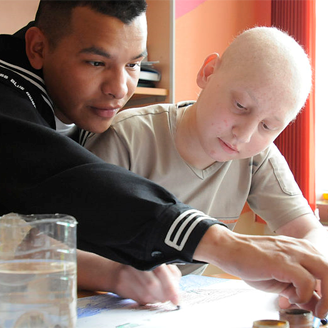Racial, Demographic Disparities Exist in Follow-Up Care for Childhood Cancer Survivors
Hispanic childhood cancer survivors are less likely to receive follow-up care later in life than white survivors, according to a new study.
Disparities exist in the follow-up care of childhood cancer survivors.

Hispanic childhood cancer survivors are less likely to receive follow-up care later in life than white survivors, according to a new study; leukemia and lymphoma were the most common childhood cancers in the study. Health insurance, younger age, and more intense treatment for the cancer were also found to be predictors of follow-up care.
“Approximately 80% of children diagnosed with cancer will attain long-term survival or cure, with over 380,000 childhood cancer survivors in the United States,” wrote authors led by Joel Milam, PhD, of the Keck School of Medicine of USC. Studies have shown high rates of chronic health conditions after 30 years of follow-up and a nearly 10-fold risk of dying earlier than the general population. Follow-up care varies widely and our knowledge of how childhood cancer survivors receive such care is incomplete; the new study looked at risk factors and protective factors for receiving follow-up care among 193 childhood cancer survivors in Los Angeles County.
The patients in the study cohort were all diagnosed between 2000 and 2007; 54% were Hispanic. The mean age at diagnosis was 12.1 years, and they had a mean of 7.8 years since diagnosis. Self-report surveys assessed follow-up care, insurance status, and demographic and clinical factors. The most common cancer type was leukemia, in 29%, followed by lymphoma (19%) and brain/central nervous system malignancies (16%). The results were published online ahead of print on October 23 in Cancer.
Of the total cohort, 73% of childhood cancer survivors reported a cancer follow-up visit in the prior 2 years, and 69% said future follow-up was either “very likely” or “likely.” On multivariate analysis, Hispanic race was significantly associated with a lower likelihood of a follow-up visit within the previous 2 years, with an odds ratio (OR) of 0.33 (95% confidence interval [CI], 0.11–0.96; P = .03). Older age-21 years and over vs under 21 years-was also significantly associated with fewer follow-up visits, with an OR of 0.24 (95% CI, 0.10–0.58; P < .001).
Having any health insurance meant childhood cancer survivors were more likely to have a visit in the prior 2 years, with an OR of 3.04 (95% CI, 1.10–8.41; P = .04). “Recent healthcare reform that includes insurance for children through parental coverage up to the age of 26 (among those whose parents have private insurance) and more affordable healthcare options for adults with pre-existing conditions may mitigate this drop off,” the authors wrote. Intent to seek further follow-up care in the future was significantly associated with having insurance and with higher healthcare self-efficacy.
The authors noted that there is a “striking lack of research information for Hispanic childhood cancer survivors.” Additional research is needed, they wrote, and should include assessments of cultural beliefs related to healthcare in Hispanic patients and survivors. “For example, there may be unique cultural beliefs concerning healthcare management/meaning of cancer that impact follow-up care behavior among Hispanics.”